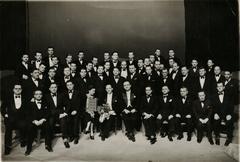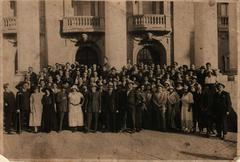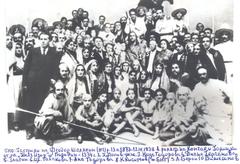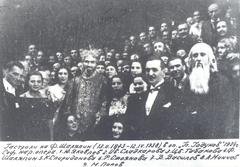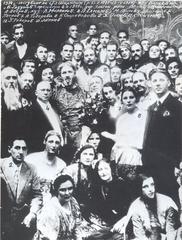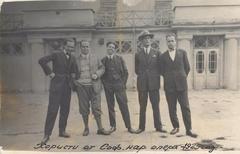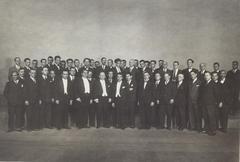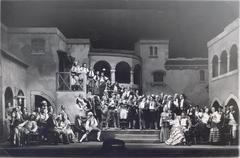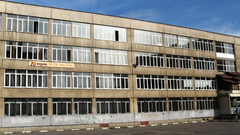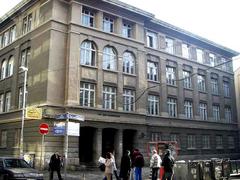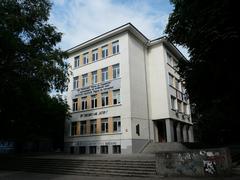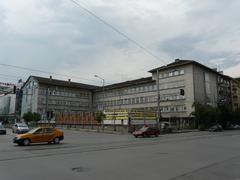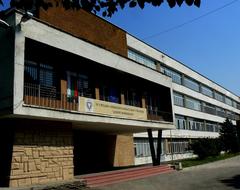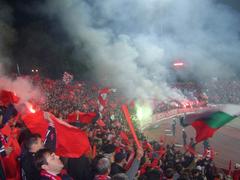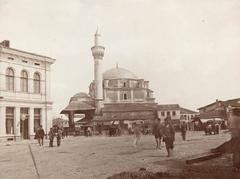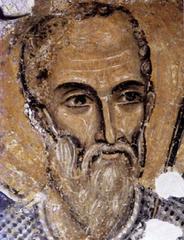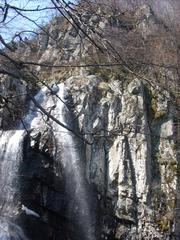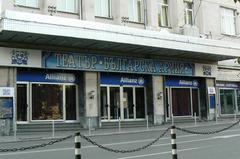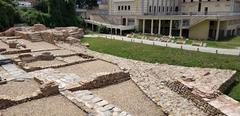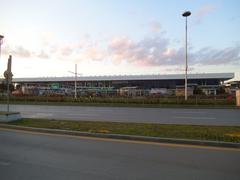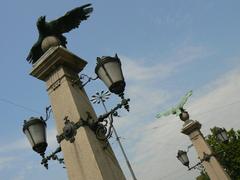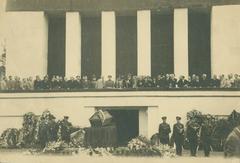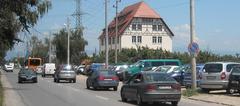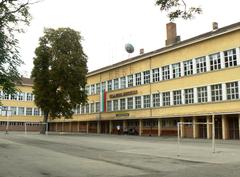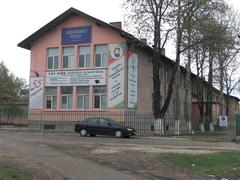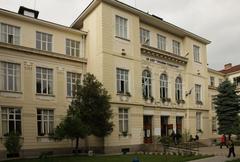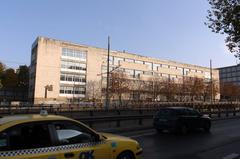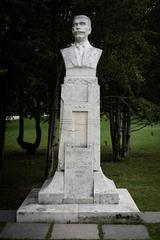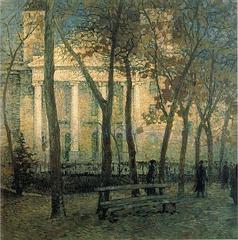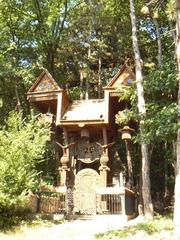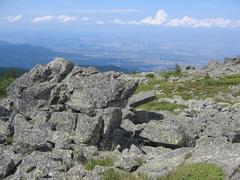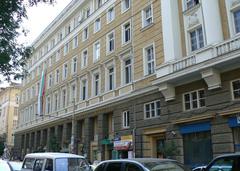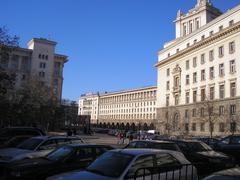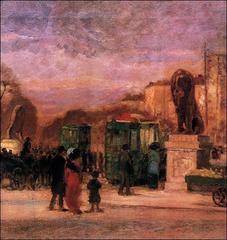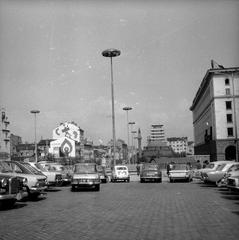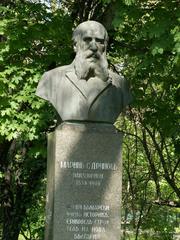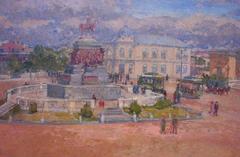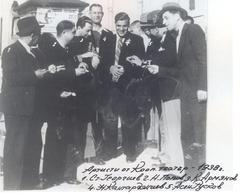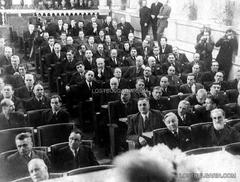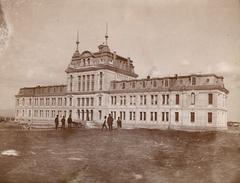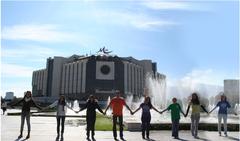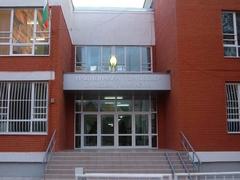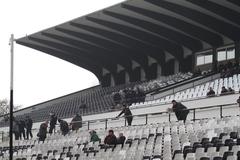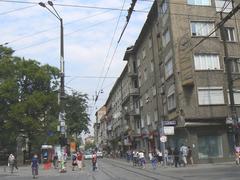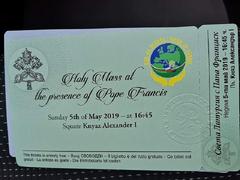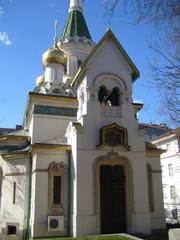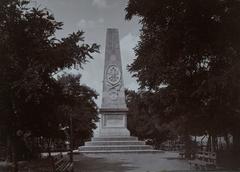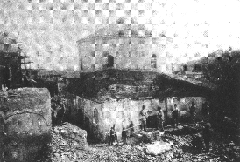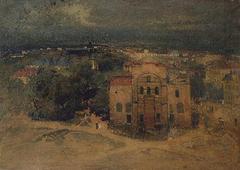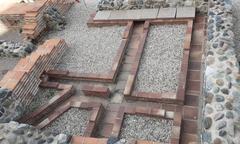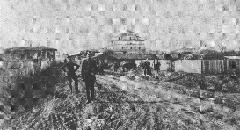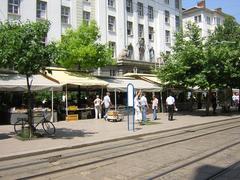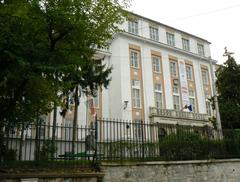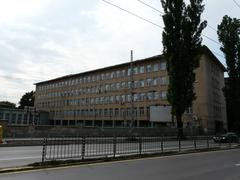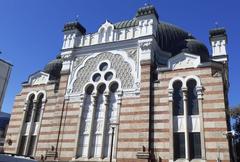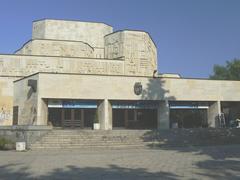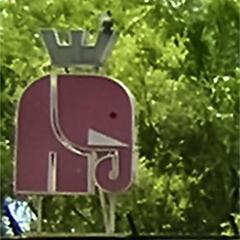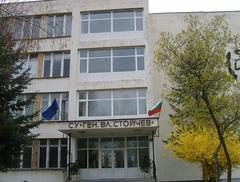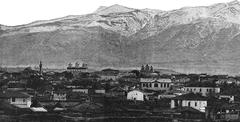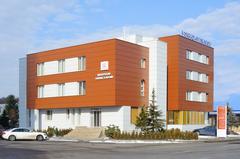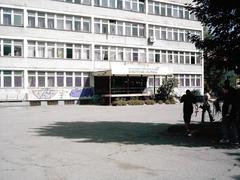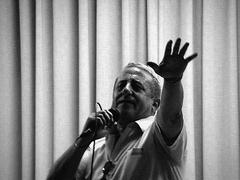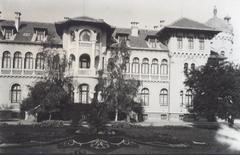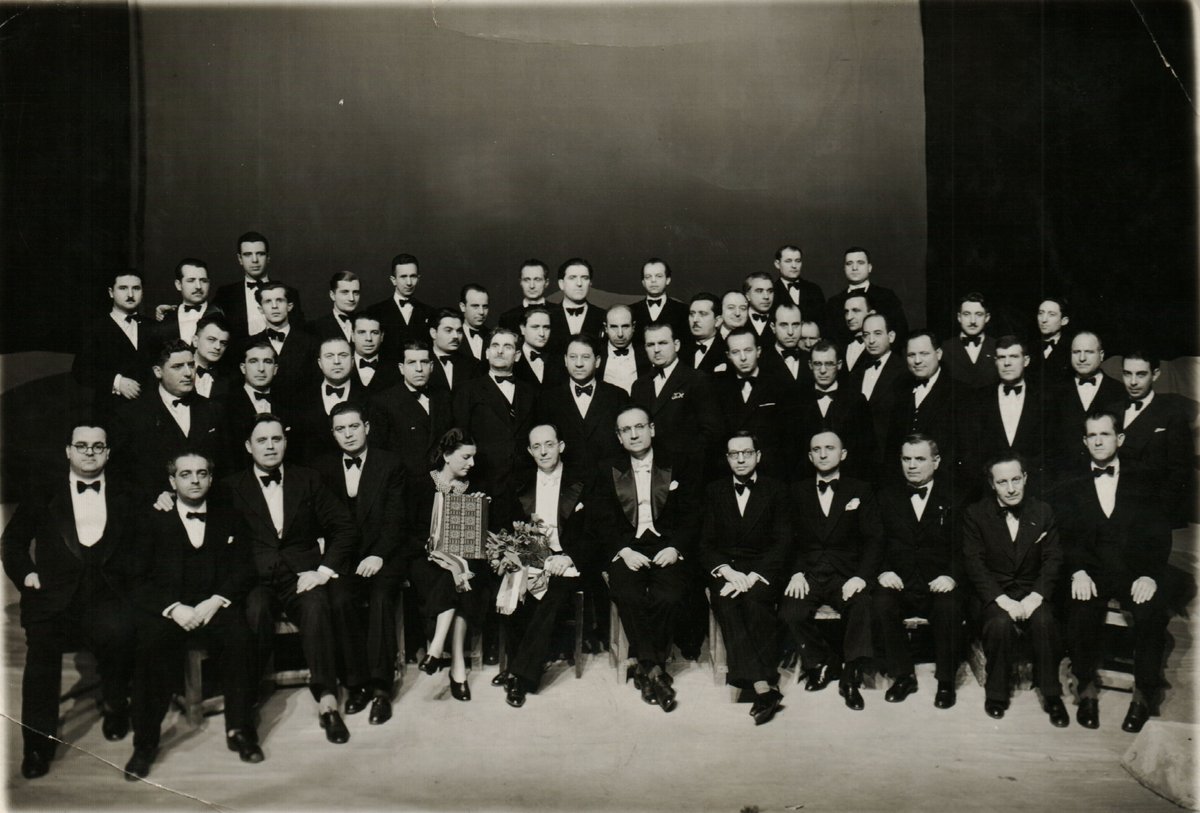
National Opera and Ballet Sofia: Visiting Hours, Tickets, and Comprehensive Guide to Sofia’s Historical Landmark
Date: 14/06/2025
Introduction
The National Opera and Ballet Sofia, situated in the heart of Bulgaria’s capital, is a symbol of the nation’s cultural heritage, artistic achievements, and architectural grandeur. Officially established in the early 20th century, with origins reaching back to the late 19th century, this institution has grown into one of Bulgaria’s most celebrated landmarks. It offers an extensive repertoire of opera and ballet, supports the country’s distinguished tradition of musical excellence, and serves as a cultural ambassador on the international stage.
This guide provides a detailed overview of the National Opera and Ballet’s history, its iconic neo-classical home, artistic milestones, practical visitor information—including visiting hours and ticketing—accessibility features, and tips for exploring nearby attractions in Sofia. Whether you are an opera lover, ballet enthusiast, or a cultural explorer, this article equips you with everything you need for a memorable visit (National Opera and Ballet of Bulgaria - Wikipedia; Sofia Opera and Ballet Official Website; Madame Bulgaria; Sofia Info Guide).
Table of Contents
- Historical Overview
- Architectural Significance
- Artistic Achievements
- Visitor Information
- Performance Schedule and Seasonal Highlights
- How to Get There
- Visitor Tips and Etiquette
- Nearby Attractions
- Frequently Asked Questions (FAQ)
- Conclusion
- References and Resources
Historical Overview
Early Foundations
The roots of opera and ballet in Sofia date to the late 19th century, following Bulgaria’s liberation from Ottoman rule. In 1890, the first opera company—part of the Capital Opera and Drama Company—was formed, reflecting the ambitions of Bulgaria’s emerging artistic community. In 1891, the company split, and while the Capital Bulgarian Opera struggled financially and disbanded soon after, the aspiration to create a permanent opera tradition endured (Wikipedia; Madame Bulgaria).
The pivotal moment came in 1908, with the founding of the Bulgarian Opera Society. In 1909, it staged its first full opera, “Pagliacci” by Leoncavallo, marking the true beginning of professional opera in Bulgaria. Early performances also included original Bulgarian works, helping to shape a unique national operatic identity.
Growth and Nationalization
In 1922, the institution was nationalized and renamed the National Opera, ushering in a new era of stability and growth. The 1920s saw significant expansion, including the founding of a dedicated ballet company in 1928. This dual tradition remains a defining feature of the institution (Opera Sofia; Sofia Info Guide).
Wartime Challenges and Postwar Revival
World War II brought severe disruptions, with the opera house damaged during the 1944 bombings of Sofia. However, after the war, the National Opera and Ballet was revived with increased government support, new facilities, and renewed artistic vigor (Madame Bulgaria).
Architectural Significance
Though plans for a dedicated venue existed from the early 1920s, the National Opera and Ballet moved into its current neo-classical home in 1953. Located at 30 Dondukov Blvd., near St. Alexander Nevsky Cathedral, the building stands as a prominent architectural monument in Sofia. Not only does it host performances, but it also serves as a venue for major cultural events and congresses (Sofia Info Guide; About Sofia).
Artistic Achievements
Opera
The National Opera’s repertoire is renowned for its breadth and quality. Productions span canonical European works—Mozart’s “Don Giovanni,” Verdi’s “La Traviata,” Bizet’s “Carmen”—as well as significant Bulgarian operas like “Momchil” by Lyubomir Pipkov and “Gergana” by Maestro Atanasov (History and Repertoire). The institution frequently collaborates with international artists, hosts the annual Wagner Festival, and has launched the careers of many globally acclaimed Bulgarian vocalists (Sofia Guide; Sightseeing Sofia).
Ballet
Founded in 1928, the ballet company is recognized for its excellence, with a repertoire of nearly 30 classical and contemporary works, including “Swan Lake,” “Giselle,” and “Romeo and Juliet.” The troupe has performed internationally, and Bulgaria’s legacy in ballet is further highlighted by the world’s first International Ballet Competition, held in Varna (Opera Sofia).
Youth and Educational Programs
Special programming for children and families includes concerts for babies, adapted operas for young audiences, and educational initiatives like “We Go to Opera” for schoolchildren (FAQ). These programs aim to cultivate future generations of opera and ballet lovers.
Visitor Information
Visiting Hours
- Box Office (1 Vrabcha Street):
- Monday–Friday: 09:00–14:00 and 14:30–19:00
- Saturday: 11:00–14:00 and 14:30–19:00
- Sunday: 11:00–14:00 and 14:30–16:00
Performance times vary by event; check the official calendar for updated schedules.
Tickets and Booking
- Price Range (2025):
- Opera & Ballet: 15–70 BGN
- Children’s Shows: 10–30 BGN
- Special Events/Festivals: Higher; see calendar
Discounts are available for students, seniors, and groups.
- Purchase Options:
- Online via the official website
- In person at the box office
- Authorized distributors (EasyPay, Eventim)
Reservations for high-demand performances are advised. E-tickets are accepted on smartphones or printed.
Accessibility
The opera house provides wheelchair access, elevators, accessible seating, and hearing assistance devices. Contact the box office in advance for specific needs.
Guided Tours
Guided tours are available upon request and offer insights into the venue’s history, architecture, and artistic operations. Advance booking is recommended.
Performance Schedule and Seasonal Highlights
- Main Season: September to July, including grand opera and ballet
- Festivals: Wagner Festival, Easter Festival, Christmas Soirees, and open-air performances at notable Sofia locations
- Notable 2025 Events:
- Wagner’s “Ring Cycle” and “Tannhäuser”
- “Swan Lake” and “Romeo and Juliet” (outdoor)
- “Les Misérables” (musical, open-air)
- Beethoven’s Symphony No. 9 (special concert)
- Children’s programming: “The Wolf and the Seven Little Kids,” “Winnie the Pooh”
See the performance calendar for details.
How to Get There
- Main Hall: 1 Vrabcha Street
- Children’s Performances: 30 Dondukov Blvd.
- Public Transport: Tram lines 20, 22; Trolleybus lines 1, 2, 4, 9, 11; Metro stations Sofia University St. Kliment Ohridski and Serdika
- Parking: City center Green and Blue zones (1–2 BGN/hour)
Visitor Tips and Etiquette
- Arrival: At least 15 minutes before start time; late arrivals seated at the first interval
- Dress Code: Formal attire is recommended
- Children: Under 6 not admitted to adult shows; special programming available
- Cloakroom: Complimentary and required for outerwear
- Phones/Photography: Not permitted during performances
Nearby Attractions
Located in central Sofia, the Opera is within walking distance of:
- St. Alexander Nevsky Cathedral
- National Archaeological Museum
- Ivan Vazov National Theatre
- City Garden and Vitosha Boulevard (shopping/dining)
These sites offer a rich context for cultural exploration before or after your visit to the Opera (About Sofia).
Frequently Asked Questions (FAQ)
Q: What are the visiting hours for the Sofia Opera and Ballet?
A: The box office is open Monday–Friday 09:00–14:00 and 14:30–19:00; weekends have shorter hours. Performance times vary—check the official site.
Q: How do I buy tickets?
A: Tickets can be purchased online, at the box office, or via authorized distributors. Early booking is advised for popular events.
Q: Are guided tours available?
A: Yes, upon request. Contact the box office for current availability.
Q: Is the venue accessible for people with disabilities?
A: Yes, with accessible entrances, seating, and hearing assistance.
Q: Can I bring young children?
A: Children under 6 are not admitted to adult performances, but there are dedicated children’s shows.
Conclusion
The National Opera and Ballet Sofia is more than a performance venue—it is a living testament to Bulgaria’s artistic legacy and cultural vitality. With its storied history, diverse programming, and architectural beauty, it stands as a must-visit destination for anyone seeking to experience the best of Bulgarian and European performing arts. Plan your visit by consulting the official schedule, booking tickets in advance, and exploring Sofia’s historical surrounds for a truly enriching cultural journey.
For the latest updates and exclusive content, download the Audiala app and follow the Sofia Opera and Ballet on social media.
Internal Links
References and Resources
- National Opera and Ballet of Bulgaria - Wikipedia
- Discover the National Opera and Ballet Bulgaria - Madame Bulgaria
- Sofia Info Guide: Sofia Opera and Ballet
- Opera Sofia: History of the National Ballet
- Sofia Opera and Ballet Official Website
- Sofia Guide: Sofia Opera and Ballet
- About Sofia: National Opera and Ballet
- History and Repertoire - BG Guide
- Sightseeing Sofia: National Opera and Ballet
- FAQ – Opera Sofia
- Performance Calendar – Opera Sofia
